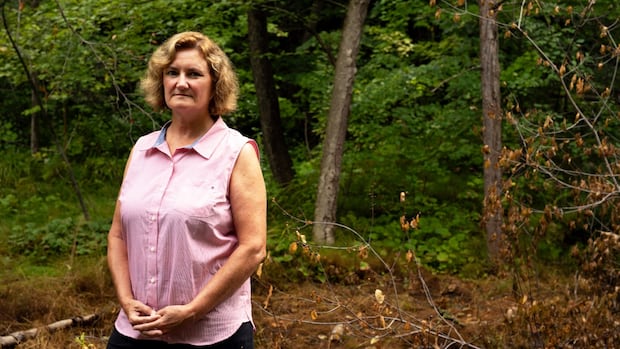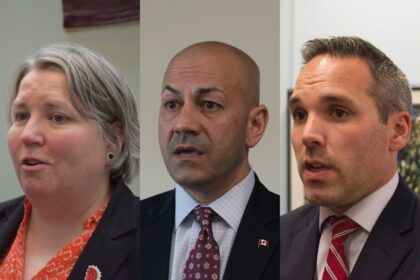Witnesses concerned about environmental impact of Ottawa plane crashWitnesses worry about the environmental impact of a tragic Ottawa plane crash at the end of July. The plane went down near Riverside Drive and West Hunt Club Road, killing the pilot.Robbyn Plumb looks over a brown patch of sickly vegetation, a remnant of a tragedy from two weeks ago.”Above our head was where the plane was suspended, caught up in a tree,” she said.The pilot died in the July 31 crash on Riverside Drive, while two passengers were injured.Plumb saw the small Grumman AA-5A plane fly over the house next door. She heard the crack of the trees and the popping from the hydro lines the plane struck.As she watched aviation fuel leaking from its wings, Plumb worried the plane would explode.The plane is long gone now. The trees it struck have been cut down, but the crash has left a lasting impact on this tranquil neighbourhood along the Rideau River.”You can see that there’s significant vegetation that is dying away,” Plumb said. “It’s right in the middle of a creek … which flows directly into the Rideau River.”Robbyn Plumb lives one door down from the site of the July 31 small plane crash that killed the pilot and injured two others. She’s now concerned about potential environmental damage. (Arthur White-Crummey/CBC)Ontario’s environment ministry said there was less than 100 litres of fuel lost in the crash, but Plumb said there’s a “particular smell in the air that still remains.””It’s kind of still triggering to me — that as I walk down the road, I am first hit with that smell, and just sort of realizing, that’s right, there was a plane crash here.”Anxious about wells and wildlifePlumb noticed a crew working at the site on Wednesday and learned they were taking water and soil samples. She wonders why it’s taken so long.”Every time I walk past the site and see more and more of the vegetation dying off, I start to really get worried about what’s the longer-term impact of this plane crash,” she said.”We all have wells, and so I’m worried about what’s happening with our water… I understand that aviation fuel still has lead in it and so that, of course, is quite a concern.” Plumb often kayaks along the river with her children, looking for frogs, turtles, fish and birds. She worries about what any potential contamination will do to them.Her next door neighbour, John Logan, walks his flat-coated retrievers, Ace and Jazz, past the site. He can see the foam that bubbles up when it rains, and figures it’s the residue of fire retardant used to douse the flames.The Ottawa Airport Authority says the retardant its fire service used is biodegradable and environmentally friendly.But Logan has also watched the grass and foliage die off under the crash site, creating a stark contrast to the lush forest that surrounds it.This Grumman AA-5A plane crashed in a wooded area off Riverside Drive, west of the Ottawa airport, on July 31, 2025. The pilot was killed, while two others who were on board suffered non-life-threatening injuries. (Name withheld)”Where the aviation fuel leaked out, it’s just all like a dead zone,” he said.Logan said he worries about petroleum reaching his well water, adding that he doesn’t think remediation work is coming quickly enough.”It’s basically two weeks since the accident,” he said. “And so we’re sort of thinking the horse has already left the barn.”‘It can only go so fast’Nick DeFazio of Ottawa Fire Services (OFS) confirmed that there was fuel leaking down the creek into the river the day of the crash.As a result, he said, the department’s hazmat and water rescue teams were deployed, installing booms to contain the spill.But with the emergency response and extrication completed, OFS is no longer in control of the site, DeFazio said.Ontario’s Ministry of the Environment, Conservation and Parks said its staff were on site the evening of the crash to assess the environmental risks and co-ordinate a response.They made a followup visit on Wednesday.”We have assessed the volume of fuel involved and determined that the risk to the environment and human health is low. Nonetheless, a qualified firm is conducting cleanup and evaluating site conditions to ensure risks are mitigated,” the ministry said in an emailed statement.”Responsibility for the spill and cleanup lies with the aircraft owners and their insurer, as outlined under Ontario’s Environmental Protection Act.”John Logan lives two houses away from the site of the crash. (Arthur White-Crummey/CBC)McLarens Aviation is the adjuster representing the aviation insurer. Its regional director, Wayne Donald, said site evaluation is in progress, adding that it takes time to deal with an insurance claim of such magnitude.”It can only go so fast. And when you’re working with the ministry, you’ve got to follow their protocols,” he said.Donald said he doesn’t believe there is any risk to the residents, though he said he can’t really comment until the results of the testing comes back.”The engineers who are doing it with the ministry will decide what kind of remediation needs to be done,” he said.”They will be looking for fuel. They will be looking for whatever other contaminants would appear.”Power surge caused damageBeyond fears of contamination, the crash has taken a financial toll.When the plane struck electrical lines, it triggered a power surge that damaged furnace motors, garage door openers, freezers, hot tubs and more.”The power surge basically fried any electronic devices that weren’t connected to a surge protector,” said Logan, whose central vacuum system shorted out.Plumb, meanwhile, figures she’s out about $5,000. She said McLarens has told her she’ll have to go through her home insurance company, which comes with a sizeble deductible.”I’m completely unsatisfied with that,” she said.Grass and foliage under the site of the crash are noticeably browner than the surrounding lush forest. (Arthur White-Crummey/CBC)Asked about the insurance concerns, Donald had a simple answer.”Residential insurance is there to cover homeowners,” he said. “Like car insurance is there to cover cars.”Despite all the headaches and anxiety, Logan said he knows his troubles pale in comparison with the tragedy for the pilot, his family and the two injured passengers.”I feel like some of our complaints are kind of low priorities, [compared to] the loss of life and the accident itself and the trauma that the passengers must have experienced,” he said. “But there is sort of this long tail to the event, and we’re sort of concerned that we have to live with whatever the long-term consequences were.”
Monday, 22 Dec 2025
Canada – The Illusion
Search
Have an existing account?
Sign In
© 2022 Foxiz News Network. Ruby Design Company. All Rights Reserved.
You May also Like
- More News:
- history
- Standing Bear Network
- John Gonzalez
- ᐊᔭᐦᑊ ayahp — It happened
- Creation
- Beneath the Water
- Olympic gold medal
- Jim Thorpe
- type O blood
- the bringer of life
- Raven
- Wás’agi
- NoiseCat
- 'Sugarcane'
- The rivers still sing
- ᑲᓂᐸᐏᐟ ᒪᐢᑿ
- ᐅᑳᐤ okâw — We remember
- ᐊᓂᓈᐯᐃᐧᐣ aninâpêwin — Truth
- This is what it means to be human.
- Nokoma











